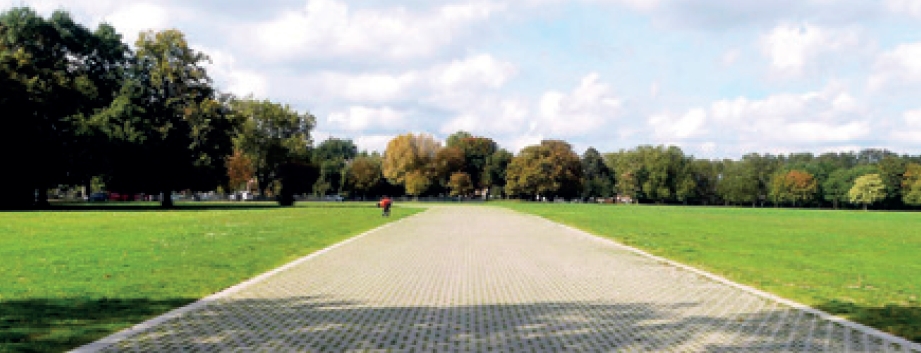Biodiversity in building design and construction
[edit] Introduction
Biodiversity (or biological diversity) is the variety of life in the world or in a particular habitat or ecosystem. It includes:
Biodiversity sustains all life on Earth.
'Sustaining Life', edited by Chivian and Bernstein details the life available, the impacts on humans and the loss to humans and the environment from extinctions. It is widely thought that the impact of climate change will move the Earth into the sixth great extinction event over the next 50-100 years.
The term 'biodiversity action plan' refers to a nationally used programme that addresses threatened species and habitats and seeks to protect and restore biological systems. A biodiversity action plan (BAP) is also an internationally recognized program addressing threatened species and habitats, designed to protect and restore biological systems. The terms originates from the 1992 Convention on Biological Diversity (CBD).
Local Nature Recovery Strategy (LNRS) is an English term that relates to the Environment Act and Biodiversity Net Gain (BNG) describing 48 area divisions that cover England. These areas agree and set priorities for nature recovery and propose actions in certain locations where action makes a particular contribution to achieving improvement. There is no requirement that any specific proposed action must be carried out but Local Nature Recovery Strategies (LNRS) aim to guide the public, private and voluntary sectors to focus where action is most effective.
A habitat management and monitoring plan (HMMP) is a detailed plan that outlines how a parcel of land will be managed over at least 30 years to create and enhance habitats for biodiversity net gain (BNG) as well as to manage and monitor the BNG.
Local Nature Recovery Strategies (LNRS) are specific and tailored to a certain area, but how a strategy looks can vary, though it is prepared by the responsible authorities and must contain a local habitat map and a written statement of biodiversity priorities. Statutory guidance for responsible authorities explains in detail what these should contain and jointly these together set out the strategy and what practical actions can be carried out to achieve it. They will also propose where actions could be carried out for best effect, to connect and expand existing areas that are important for nature.
Urban development can have a significant impact on our natural habitats. With habitat modification having been identified as one of the most important drivers of biodiversity loss, the urban environment is becoming an increasingly expanding geographical area that could be used to support wildlife. For more information see: Local Nature Recovery Strategies.
From the introduction of green infrastructure, to the engagement and active participation of local communities and city residents, there are numerous ways in which the urban environment can be developed to promote the integration of biodiversity.
For more information see: Biodiversity in the urban environment.
Biodiversity offsetting, is a market tool which enables the off-site creation, restoration or enhancement of habitats as compensation for habitat and species loss resulting from a development.
For more information see: Biodiversity offsetting.
In December 2018, the UK government began a consultation process which proposed requiring developers to ensure habitats for wildlife are enhanced and left in a measurably better state than they were pre-development.
On February 12 2024, Biodiversity Net Gain (BNG) which is part of the Environment Act became mandatory. This means that based on the statutory biodiversity metric, biodiversity units (area, hedgerow and watercourse units) needs to be calculated prior to a development taking place, along with how many units are needed to replace units of habitat lost through the development. Developers need to achieve a 10% BNG, through the creation or enhancement of habitats, this needs to be evidenced via a biodiversity gain plan which can be submitted to the local planning authority after the planning application has been approved. The assessment needs to be carried out by a professional ecologist, according to the guidance and in line with any Local Nature Recovery Strategy (LNRS) and improvements will be recorded in the publicly available biodiversity gain site register.
For more information see: Biodiversity net gain consultation.
[edit] Related articles on Designing Buildings
- Biodiversity in the urban environment.
- Biodiversity net gain and related terminologies explained.
- Biodiversity net gain consultation.
- Biodiversity offsetting.
- Biophilia.
- Biophilic design.
- BREEAM Enhancing site ecology.
- BREEAM Long term impact on biodiversity.
- Campaigning for biodiversity.
- Ecological network.
- Ecological impact assessment.
- Ecology.
- Environmental impact assessment.
- Eutrophication.
- Geodiversity.
- Green corridor.
- Green infrastructure.
- Green roofs.
- Habitat.
- Helping to make Europe a wilder place.
- Nature improvement area.
- Natural capital.
- Natural environment white paper.
- Parleys Canyon Wildlife Bridge.
- Protected species.
- Spontaneous City at Cow Tower.
- Sustainable development toolkit.
- The future of green infrastructure.
- Tree preservation order.
Surrey Hills Directory
[edit] Planning
Building Design in the Surrey Hills
[edit] Highways
Conserving and Enhancing Country Lanes in the Surrey Hills AONB
[edit] Biodiversity & Landscape
Landscapes Review: National Parks & AONBs 2019
Light Pollution - Threat to Migrating Birds
Making Local Nature Recovery Strategies deliver
[edit] Health & Wellbeing
Nature and Wellbeing: The Evidence
How nature can be used to improve wellbeing








